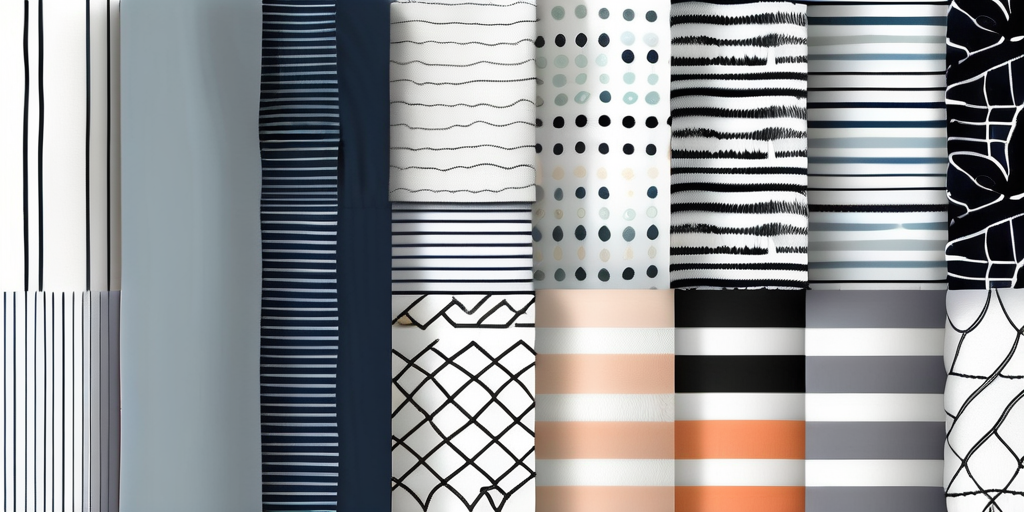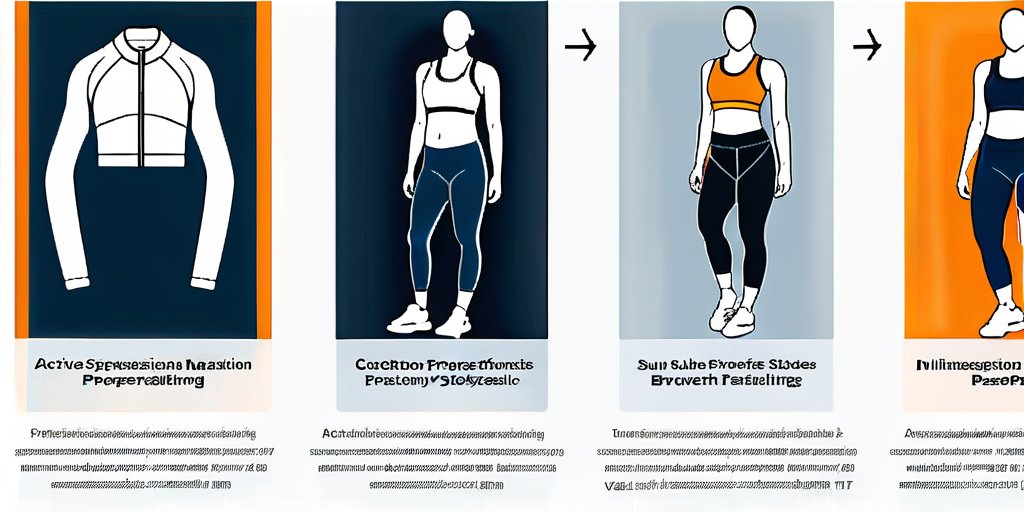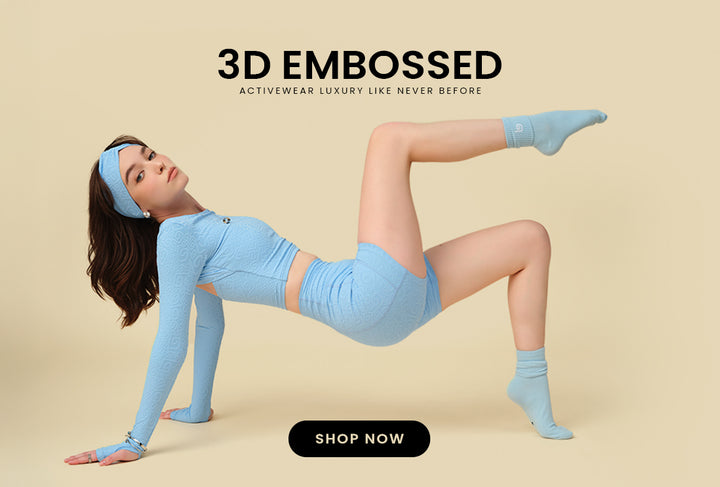If you're an active person, then you know how important it is to have the right activewear. From yoga pants to running tops, the material of your activewear can make all the difference in your performance and comfort. In this ultimate guide, we will explore everything you need to know about activewear material, from understanding the importance of choosing the right material to delving into the properties of different types of activewear materials. We'll also discuss the breakdown of natural vs synthetic materials, the role of technology in activewear material, and provide tips on how to care for your activewear to extend its lifespan.
Understanding Activewear Material
When shopping for activewear, it's crucial to understand the different materials used in their production. The right material can enhance your performance, while the wrong one can leave you feeling uncomfortable and hinder your movements. By knowing the ins and outs of activewear materials, you can make informed decisions about the clothing you purchase.

The Importance of Choosing the Right Material
Choosing the right material for your activewear is more than just a matter of aesthetics. The material plays a significant role in determining your overall experience while engaging in physical activities. The right material can help regulate body temperature, wick away moisture, and provide the necessary flexibility for movements.
Let's take a closer look at the various aspects that make activewear materials so important:
Regulating Body Temperature: When you're working up a sweat during a workout, it's essential to have activewear that can help regulate your body temperature. Certain materials, like bamboo and polyester, have excellent moisture-wicking properties that draw sweat away from your body, keeping you dry and comfortable.
Moisture-Wicking: Moisture-wicking is a crucial feature in activewear materials, especially during intense physical activities. Fabrics like nylon and spandex are known for their ability to pull moisture away from the skin, allowing it to evaporate quickly. This not only keeps you dry but also helps prevent chafing and irritation.
Flexibility and Range of Motion: Activewear materials need to provide the necessary flexibility and stretch for a wide range of movements. Fabrics like spandex and elastane are known for their excellent stretch and recovery properties, allowing you to move freely without any restrictions.
Different Types of Activewear Materials
Activewear materials come in a wide variety, each with its own unique properties. Some of the most popular materials include cotton, wool, bamboo, polyester, nylon, and spandex. Understanding the characteristics of each material can assist you in making an informed decision based on your specific needs and preferences.
Cotton: Cotton is a natural fabric that is breathable and soft against the skin. It provides comfort and is suitable for low-intensity activities or casual wear. However, cotton tends to retain moisture, making it less ideal for intense workouts or activities that involve a lot of sweating.
Wool: Wool is a natural fiber that offers excellent insulation and moisture-wicking properties. It can keep you warm in cold weather and regulate body temperature by wicking away sweat. Wool is also naturally odor-resistant, making it a great choice for outdoor activities in varying climates.
Bamboo: Bamboo fabric is known for its softness and breathability. It has excellent moisture-wicking properties and is naturally hypoallergenic, making it suitable for those with sensitive skin. Bamboo fabric is also eco-friendly, as bamboo is a highly sustainable plant.
Polyester: Polyester is a synthetic fabric that is widely used in activewear due to its durability and moisture-wicking properties. It dries quickly and is resistant to wrinkles and shrinking. Polyester blends are often used to enhance the fabric's stretch and flexibility.
Nylon: Nylon is another popular synthetic fabric used in activewear. It is lightweight, durable, and has excellent moisture-wicking properties. Nylon is known for its strength and abrasion resistance, making it suitable for high-intensity activities and sports.
Spandex: Spandex, also known as elastane, is a synthetic fiber known for its exceptional stretch and recovery properties. It is often blended with other fabrics to provide flexibility and support. Spandex allows activewear to move with your body, providing a comfortable and unrestricted fit.
By understanding the characteristics and properties of different activewear materials, you can choose the right fabric that suits your needs and preferences. Whether you're engaging in intense workouts or casual activities, selecting the appropriate material can enhance your performance and overall comfort.
Delving into the Properties of Activewear Materials
Now that we have a general understanding of activewear materials, let's dive deeper into their specific properties. By exploring the different characteristics, you will gain further insights into what makes activewear materials suitable for different activities.

When it comes to activewear, breathability and moisture-wicking properties are of utmost importance. Breathable materials allow air to circulate, preventing overheating during physical activities. This is particularly crucial during intense workouts or outdoor activities where the body generates a significant amount of heat. Activewear materials with excellent breathability help to regulate body temperature, keeping you cool and comfortable.
In addition to breathability, moisture-wicking properties are essential for activewear. These properties allow the fabric to pull sweat away from the skin, keeping you dry and comfortable. Moisture-wicking fabrics have special fibers that quickly absorb sweat and transport it to the outer surface of the fabric, where it can evaporate. This not only helps to prevent discomfort caused by wetness but also reduces the risk of chafing and irritation.
Another important aspect of activewear materials is durability. Activewear needs to withstand the demands of intense workouts and constant movement. The material should be able to handle regular wear and tear without losing its shape or deteriorating in quality. High-quality activewear materials are often designed to be resistant to abrasion and pilling, ensuring that they can withstand the rigors of various activities.
Flexibility is also crucial when it comes to activewear. The material should allow for a full range of motion during exercises and activities. Whether you're doing yoga, running, or weightlifting, you need activewear that moves with you. Flexibility in the fabric ensures that it doesn't restrict your movements, allowing you to perform at your best.
Comfort is paramount when it comes to activewear. The material should feel soft against the skin and not cause any irritation. Activewear materials are often designed to have a smooth and gentle texture, ensuring maximum comfort during workouts. Additionally, the fit of the activewear should be supportive without being restrictive. Finding the right balance between comfort and fit can greatly enhance your performance and enjoyment of physical activities.
As you can see, activewear materials have a range of properties that make them suitable for different activities. From breathability and moisture-wicking to durability and flexibility, each characteristic plays a crucial role in enhancing your overall comfort and performance. So, the next time you're shopping for activewear, consider these properties to ensure that you choose the right materials for your specific needs.
Material Breakdown: Natural vs Synthetic
When it comes to activewear, the choice of materials plays a crucial role in determining comfort, performance, and overall satisfaction. Now, let's delve deeper into the breakdown between natural and synthetic materials commonly used in activewear. Each category has its own set of advantages and considerations to keep in mind when selecting the perfect activewear for your needs.

Cotton, Wool, and Bamboo
Many activewear enthusiasts prefer natural materials due to their breathability, comfort, and eco-friendly qualities. Cotton, wool, and bamboo are three popular natural materials that offer their unique benefits.
Cotton, known for its softness and breathability, is a go-to choice for many individuals. It allows air to circulate freely, keeping you cool during workouts. Additionally, cotton is hypoallergenic, making it suitable for those with sensitive skin.
Wool, on the other hand, is renowned for its excellent moisture-wicking properties. It can absorb a significant amount of moisture without feeling damp, making it ideal for intense workouts or outdoor activities. Furthermore, wool is naturally odor-resistant, ensuring that you stay fresh even during the most rigorous exercises.
Bamboo, a relatively newer addition to the activewear scene, has gained popularity for its sustainability and versatility. It is known for its moisture-wicking capabilities, keeping you dry and comfortable throughout your workout. Moreover, bamboo fabric is incredibly soft and gentle on the skin, providing a luxurious feel.
Polyester, Nylon, and Spandex
While natural materials have their merits, synthetic materials have also made a significant impact in the world of activewear. Polyester, nylon, and spandex are three commonly used synthetic materials that offer a range of benefits.
Polyester, a synthetic fabric known for its durability, is highly resistant to stretching, shrinking, and wrinkling. It is also quick-drying, making it suitable for intense workouts or activities that involve a lot of sweating. Additionally, polyester is colorfast, meaning it retains its vibrant hue even after multiple washes.
Nylon, another popular synthetic material, is valued for its strength and abrasion resistance. It is incredibly lightweight and offers excellent flexibility, allowing for unrestricted movement during workouts. Nylon is also known for its moisture-wicking properties, ensuring that sweat is quickly drawn away from the body, keeping you dry and comfortable.
Spandex, often blended with other fabrics, is the go-to material for activewear that requires stretch and support. It provides exceptional elasticity, allowing the garment to move with your body without losing its shape. Whether you're engaging in yoga, running, or any other high-intensity activity, spandex ensures a snug and comfortable fit.
When choosing between natural and synthetic materials, it's essential to consider factors such as breathability, moisture-wicking capabilities, durability, and flexibility. Ultimately, the right choice depends on your personal preferences, the type of activity you'll be engaging in, and the specific features you value most in your activewear.
The Role of Technology in Activewear Material
Innovation plays a crucial role in the development of activewear materials. Technological advancements have brought about exciting changes in the industry, allowing for more functional and performance-enhancing materials.
One of the key areas where technology has made a significant impact is in the production of activewear materials. New manufacturing techniques have paved the way for improved materials that offer enhanced breathability, moisture-wicking, and durability. For example, seamless construction has revolutionized the activewear industry by eliminating uncomfortable seams and providing athletes with optimal comfort. This innovative technique involves knitting the garment in one continuous piece, resulting in a smooth and seamless finish. Additionally, laser-cut designs have gained popularity in activewear, allowing for precise and intricate patterns that not only enhance the aesthetics but also provide functional benefits. These laser-cut designs enable strategic ventilation and cooling in areas where athletes need it the most, enhancing their performance and overall experience.
Innovations in Material Production
New manufacturing techniques have paved the way for improved materials that offer enhanced breathability, moisture-wicking, and durability. Advancements such as seamless construction and laser-cut designs have revolutionized the activewear industry, providing athletes with optimal comfort and performance.
Another exciting innovation in activewear material production is the use of nanotechnology. Nanotechnology involves manipulating materials at the molecular level, resulting in fabrics with extraordinary properties. For instance, nanofibers can be incorporated into activewear materials to enhance their breathability and moisture-wicking capabilities. These nanofibers have a large surface area, allowing them to effectively transport moisture away from the body, keeping athletes dry and comfortable during intense workouts.
Furthermore, advancements in textile engineering have led to the development of fabrics with specialized properties. For example, there are now activewear materials that offer UV protection, shielding athletes from harmful sun rays during outdoor activities. Additionally, some fabrics are designed to provide compression, which can improve blood circulation and muscle recovery.
Future Trends in Activewear Material
The world of activewear material continues to evolve. Future trends include the incorporation of sustainable and recycled materials, as well as the integration of smart technology such as sensors and temperature-regulating fabrics.
Sustainability is becoming increasingly important in the activewear industry, with a growing demand for eco-friendly materials. Manufacturers are exploring innovative ways to incorporate sustainable fibers, such as recycled polyester and organic cotton, into activewear production. These materials not only reduce the environmental impact but also offer performance benefits, such as moisture-wicking and breathability.
Another exciting trend is the integration of smart technology into activewear materials. Sensors embedded in the fabric can provide real-time data on heart rate, body temperature, and other vital metrics, allowing athletes to monitor their performance and make adjustments accordingly. Additionally, temperature-regulating fabrics are being developed, which can adapt to the body's needs by providing warmth or cooling as required. These advancements in smart technology are revolutionizing the way athletes train and perform, enhancing their overall experience and results.
As technology continues to advance, the possibilities for activewear materials are limitless. Whether it's through innovative manufacturing techniques, nanotechnology, or the integration of smart technology, the role of technology in activewear material is set to shape the future of the industry. Stay on the lookout for these exciting developments in the coming years.
Caring for Your Activewear
Proper care and maintenance can significantly extend the lifespan of your activewear. By following these simple tips, you can keep your activewear looking and performing its best for a long time.
Washing and Drying Tips
Always check the care instructions on the garment label before washing your activewear. Use gentle detergents and avoid fabric softeners, as they can clog the fabric's pores and affect its moisture-wicking capabilities. Additionally, air-drying your activewear is preferred to maintain its shape and elasticity.
Extending the Lifespan of Your Activewear
Avoid exposing your activewear to excessive heat or direct sunlight, as it can degrade the fabric over time. If you notice any signs of wear or pilling, it's best to retire the item and invest in new activewear to ensure optimal performance and comfort.
In conclusion, understanding activewear material is essential for anyone who wants to make informed choices when purchasing workout clothing. By considering factors such as breathability, moisture-wicking, durability, and comfort, you can select activewear that will enhance your performance and keep you comfortable during even the most intense workouts. Whether you opt for natural or synthetic materials, staying updated on technological advancements and properly caring for your activewear will help you get the most out of your garments. So go ahead, hit the gym or hit the trails, and rock your activewear with confidence, knowing that you've chosen the right material for your active lifestyle.



